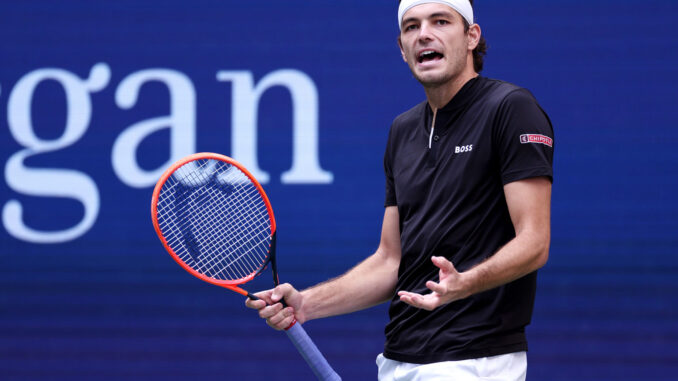
Taylor Fritz, the top-ranked American male tennis player, has found himself at the center of a swirling controversy after recent comments sparked a wave of criticism from fans. Accusations of selfishness and greed have been leveled against him, creating a storm on social media and within the tennis community. The controversy stems from Fritz’s perspective on the financial realities of professional tennis, a topic that often ignites passionate debate.
Fritz, known for his candor and straightforward approach, has never shied away from expressing his views on the economics of the sport. He has previously highlighted the disparity in earnings between the top players and those lower in the rankings, a concern shared by many within the professional circuit. However, his recent remarks have been interpreted by some as insensitive and out of touch with the struggles faced by many aspiring and current professional players.
The crux of the criticism lies in Fritz’s comments regarding the prize money structure of professional tournaments. While acknowledging the challenges faced by lower-ranked players, he emphasized the significant investments he and other top players make in their careers, including coaching, travel, and training expenses. He argued that the top players, who generate the most fan interest and revenue for tournaments, deserve a larger share of the prize money.
“It’s expensive to be a professional tennis player,” Fritz stated, pointing to the considerable costs associated with competing at the highest level. He highlighted the expenses incurred for coaching staff, travel arrangements, and maintaining peak physical condition. “We invest a lot in our careers,” he emphasized, suggesting that this investment should be reflected in the prize money distribution.
These comments, however, have been met with a backlash from a segment of the tennis fanbase. Critics have accused Fritz of being “selfish” and “greedy,” arguing that his focus on the financial returns for top players overlooks the difficulties faced by those struggling to make a living on the tour. Many have pointed out that the vast majority of professional tennis players do not earn enough to cover their expenses, relying on sponsorships or other sources of income to sustain their careers.
“It’s easy to talk about investment when you’re already at the top,” one fan commented, highlighting the disparity in resources between established stars like Fritz and those trying to break through. “What about the players who are barely scraping by, who can’t afford a coach, who have to sleep in their cars just to compete?”
Another critic argued that Fritz’s perspective ignores the broader ecosystem of professional tennis. “The top players benefit from the entire tour structure,” they pointed out. “The smaller tournaments, the qualifying rounds, they all contribute to the overall ecosystem. Without those, there wouldn’t be a platform for the top players to shine.”
The debate surrounding prize money distribution in professional tennis is complex and multifaceted. While top players like Fritz invest heavily in their careers and are undoubtedly a major draw for fans, the financial realities for lower-ranked players are often stark. The cost of travel, coaching, equipment, and accommodation can be prohibitive, making it difficult for many to sustain a professional career without significant financial backing.
Fritz’s comments have reignited this ongoing discussion, highlighting the tension between the need to reward top performers and the desire to create a more equitable system for all players. Some have suggested a more tiered prize money structure, where a greater percentage of the purse is allocated to lower-ranked players, while others argue that increasing overall tournament sponsorship and revenue is the key to addressing the financial challenges faced by many professionals.
“There needs to be a balance,” suggested a former professional player. “The top players deserve to be compensated for their success, but we also need to ensure that there’s a viable pathway for aspiring players. The current system is not sustainable for many.”
The controversy surrounding Fritz’s comments serves as a reminder of the financial disparities that exist within professional sports. While the spotlight often shines on the glamorous lives of top athletes, the reality for many aspiring and current professionals is often far less glamorous. The debate over prize money distribution in tennis is likely to continue, and Fritz’s comments have undoubtedly added fuel to the fire. It remains to be seen how this discussion will evolve and whether any changes will be implemented to create a more equitable and sustainable system for all players. The conversation, however, is a crucial one for the future of professional tennis.
Leave a Reply